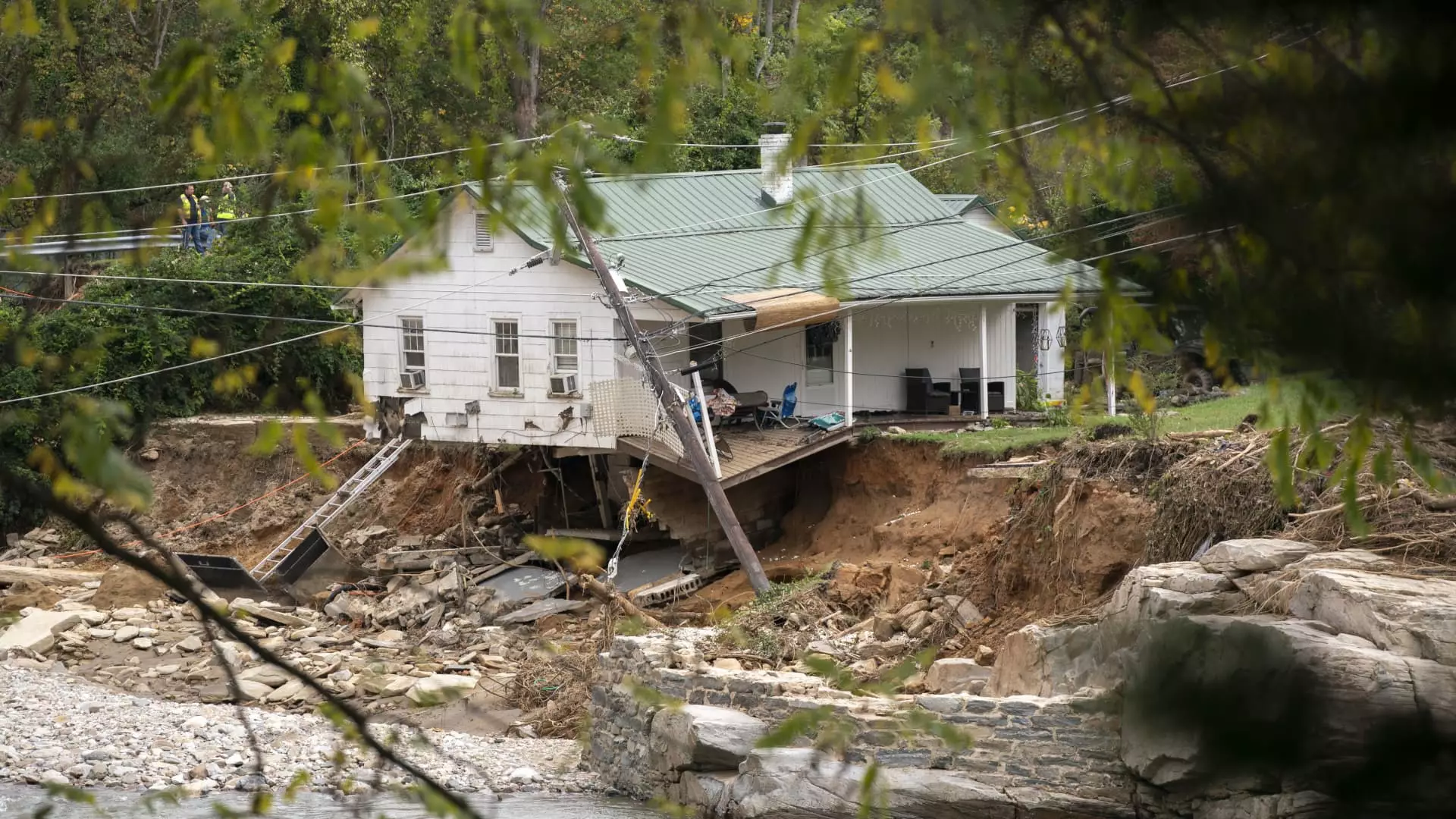Natural disasters, such as hurricanes, often lead to staggering insured losses, and the recent Hurricane Helene is no exception, with damages estimated over $6 billion. However, the most alarming aspect lies in the significantly higher figure of uninsured losses, particularly among homeowners who have unwittingly exposed themselves to severe risks. Most notably, in North Carolina—one of the hardest-hit regions—many residents lacked flood insurance, a safety net that could mitigate financial devastation in the face of unpredictable climate events.
The majority of homeowners in this state do not secure flood insurance primarily because they are not located within flood zones as defined by the Federal Emergency Management Agency (FEMA). With only 4% of North Carolina homes falling within FEMA-designated flood zones, there exists a grave misconception regarding the true extent of flood risk in the area. This situation highlights an urgent need for innovative tools and resources that can educate homeowners about the fluctuating landscape of climate risks.
Revolutionizing Risk Assessment with Technology
In an effort to address this knowledge gap, companies like First Street are stepping in with advanced risk-assessment technology that accounts for the impacts of climate change on property investments. By integrating climate risk data into property evaluations, the firm provides an essential service to potential buyers and sellers alike. Their latest initiative includes the incorporation of climate risk scores for each property listed on real estate platforms such as Zillow. Skylar Olsen, chief economist at Zillow, emphasizes the critical nature of this data by stating that climate risks are increasingly pivotal in shaping home-buying decisions.
These risk scores offer a more comprehensive view, showcasing not only the present risks associated with properties but also projecting those risks 15 to 30 years into the future. For prospective homebuyers, these insights are invaluable, particularly in light of the escalating severity of extreme weather events. The fact that many accidents can occur outside designated flood zones—prompted by heavy rainfall—reinforces the necessity for updated maps and clear insights into potential risks.
Recent surveys reveal a significant shift in buyer behavior, with over 80% of respondents indicating that climate risk increasingly influences their purchasing decisions. Flood risk emerged as the leading concern among various environmental threats, followed closely by wildfire risk. As these risks are embedded in real estate listings, today’s potential buyers find it imperative to consider climate-related factors when deciding where to purchase a home.
This shift is not merely theoretical. Data collected by Zillow indicates a rising prevalence of properties with major climate risks, including substantial increases in risks related to flooding and wildfires over the past five years. Such trends manifest a growing awareness of and response to climate vulnerabilities that could potentially alter established patterns and values in the real estate market.
As awareness and concerns about climate risks rise, it is likely that property values will reflect these realities. The interconnected nature of insurance costs, risk assessment, and property valuations cannot be ignored. As Homebuyers increasingly factor in insurance when evaluating properties, any hikes in insurance premiums associated with heightened risks will inevitably lead to declines in home values—especially in areas deemed at significant risk.
Ed Kearns, chief science officer at First Street, underscores the importance of this trend, pointing out that new flood maps generated by their technology could substantially inform consumer decisions regarding flood insurance. He stresses that an individual’s safety from flooding cannot be solely determined by FEMA’s flood zone designations. Therefore, as more buyers turn to climate risk assessments, a re-evaluation of property values in high-risk areas becomes an important financial reality.
The need for effective climate risk assessment is evident in the wake of recent natural disasters, illuminating the potential pitfalls of lax insurance coverage among homeowners. With the introduction of innovative technology that informs property buyers about climate threats, it is crucial for the real estate market to adapt to this new paradigm. Homebuyers today must navigate an evolving landscape where climate resilience will dictate not only the purchasing process but also the future stability of property values. As this vital information becomes more widely available, it holds the promise of creating a more informed and prepared society—ready to tackle the challenges posed by a changing climate.

